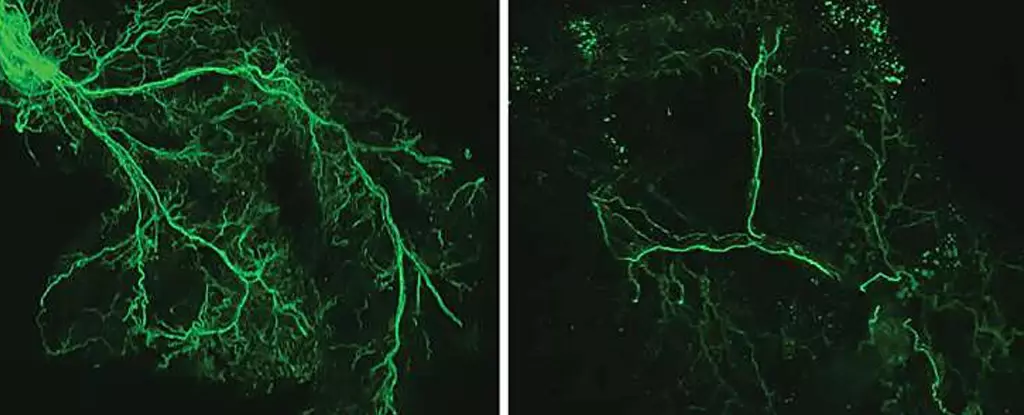Aging is a natural process that brings with it wisdom, experience, and even evolutionary advantages. However, the gradual deterioration of our biology as we grow older is far from enjoyable for anyone. But what if there was a way to delay aging and extend healthy lifespans? A recent study conducted on mice by developmental biologist Shin-ichiro Imai and his team at Washington University suggests just that. By manipulating a crucial part of the brain, they were able to demonstrate the potential for delaying the aging process and extending the lifespan of mice.
Our brains play a vital role in controlling a vast number of bodily functions through nervous impulses, which manage communication networks based on the flow of hormones. However, as we age, the infrastructure carrying these communication signals and its surroundings begin to deteriorate, leading to an increasing number of faults. Consequently, our organs and tissues miss out on the necessary signals required to maintain their function.
Previous studies have linked signaling chemicals in the pathway between the brain and fat tissues, particularly white adipose fat, with the aging process in mice. Building on this knowledge, Imai and his colleagues decided to investigate the early steps of this communication network more closely. They focused on a specific group of neurons, known as DMHPpp1r17, located in the brain’s hypothalamus. These neurons serve as a crucial link between the nervous system and the body’s hormone system.
Using mice as their subjects, the researchers allowed one group to age naturally while manipulating the DMHPpp1r17 neurons at the beginning of the brain-to-fat pathway to keep them active. Astonishingly, the mice that received this neuron activation treatment lived an additional 60 to 70 days compared to the control group, which followed the typical lifespan of a laboratory mouse. Furthermore, the mice that underwent neural treatment exhibited healthier characteristics in their old age, such as thicker and shinier coats, and increased activity levels.
The Mechanism Behind the Extended Lifespan
Further investigation into the mechanism at play revealed fascinating insights. The activation of DMHPpp1r17 neurons triggers our body’s fight or flight response, controlled by the sympathetic nervous system through the Ppp1r17 molecule. This response promotes the utilization of white adipose stores, leading to the release of a protein called eNAMPT. In turn, eNAMPT regulates hypothalamus neurons, thereby completing the circuit.
It is worth noting that Ppp1r17 is conserved across various vertebrate species, including humans, suggesting its essential functions throughout evolution. This circuit plays a vital role in fueling our bodies. However, aging mice exhibit a decline in the production of Ppp1r17, resulting in fewer activated fat stores. With reduced activity, the nerves in our adipose tissues begin to degrade, leading to a decrease in eNAMPT production. As a consequence, fewer hypothalamus neurons are activated, creating a self-perpetuating cycle of deterioration.
Although this study sheds light on the potential of delaying aging and extending healthy lifespans, many details are still to be explored. Researchers are eager to determine whether eNAMPT directly affects hypothalamic neurons or if there are intermediary steps involved. Additionally, they are curious about the potential impact of this feedback loop on communication between other tissue types in our bodies, such as skeletal muscle. Understanding these connections could provide further insights into the factors influencing biological aging, including stress, weight, and exercise.
This groundbreaking study presents the tantalizing possibility of delaying the aging process and extending healthy lifespans. By manipulating a critical part of the brain, researchers were able to significantly increase the lifespan of mice while improving their overall health in old age. While there is still much to uncover, this study highlights the intricate connection between our brain, fat tissues, and the aging process, showcasing the remarkable ways in which our physiology is intertwined with the world around us.



Leave a Reply